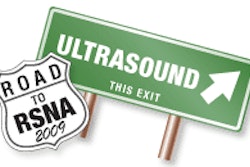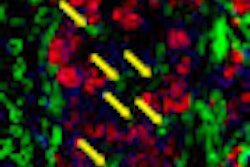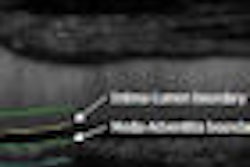Gerald LeCarpentier, Ph.D., and colleagues used a system they developed with GE Global Research that integrated the two technologies. With a special compression paddle that works with both modalities, the prototype system operated with a computer-controlled translation apparatus and a GE Logiq 9 ultrasound device. The system includes a display that allows users to select and visualize volumes of interest (VOIs) in both DBT and automated breast ultrasound.
The study's six reading radiologists first received the DBT and automated breast ultrasound exams without the VOI data; four weeks later, they read the same exams with the VOI data. Each chose the most suspicious VOIs in the digital breast tomosynthesis images and rated the likelihood of malignancy on a scale of 0 to 12. These ratings were then assessed with DBT alone and with a combination of DBT and automated breast ultrasound.
Of the 24 volumes of interest gathered, six were malignant and 18 were benign. Seven of the 18 benign VOIs were cysts, which showed that with the addition of automated breast ultrasound data, cysts were better clinically defined, according to LeCarpentier.
"Combined automated ultrasound and tomosynthesis may improve specificity of tomosynthesis diagnosis by discrimination of cysts," he wrote.



















